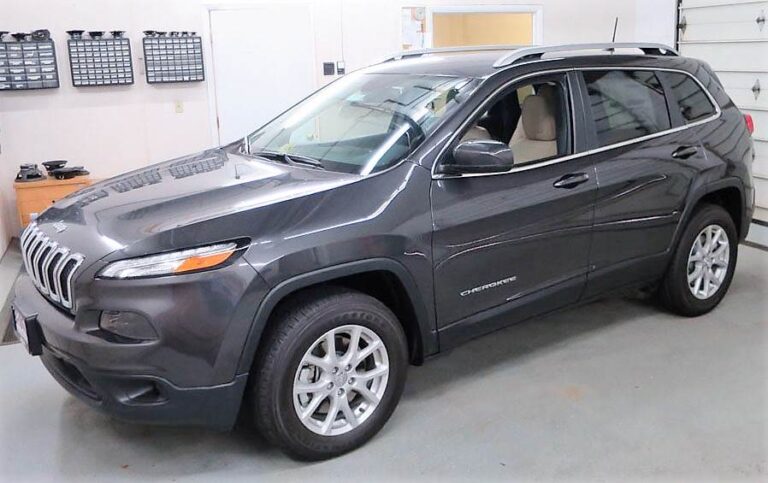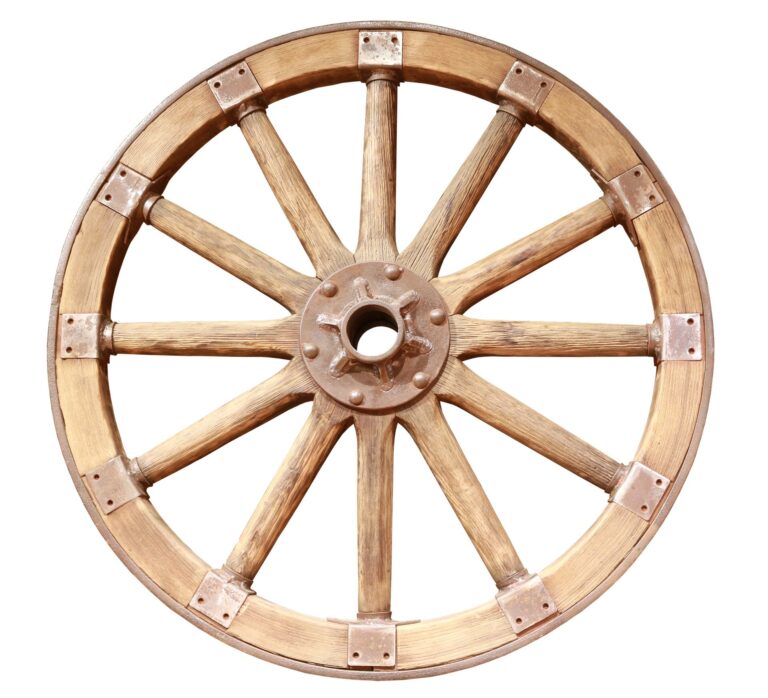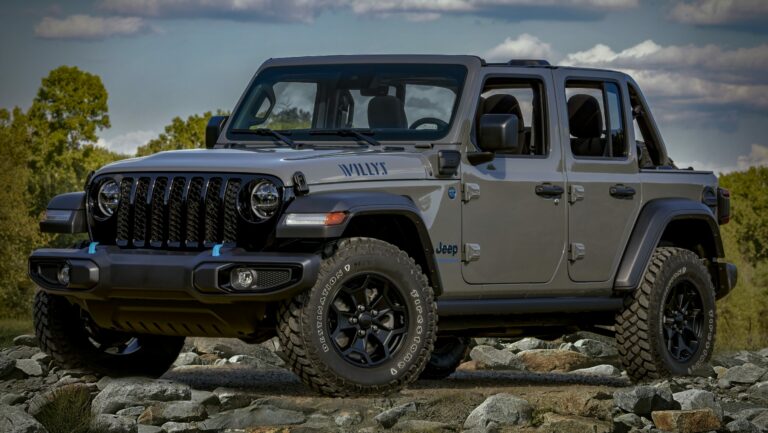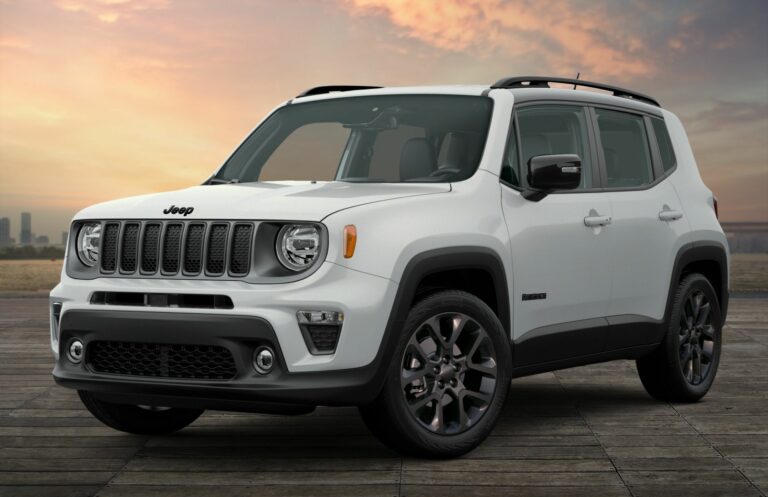1984 Jeep CJ7 For Sale: Your Ultimate Guide to Finding and Owning a Legend
1984 Jeep CJ7 For Sale: Your Ultimate Guide to Finding and Owning a Legend jeeps.truckstrend.com
The rumble of a classic inline-six, the feel of the wind whipping past an open cabin, and the undeniable sense of adventure—these are the hallmarks of a Jeep CJ7. Among the pantheon of iconic off-road vehicles, the 1984 Jeep CJ7 holds a special place. It represents the pinnacle of the original Civilian Jeep (CJ) series, being one of the last full model years before the transition to the Wrangler (YJ). For enthusiasts, collectors, and those seeking a rugged piece of automotive history, a 1984 Jeep CJ7 for sale isn’t just a transaction; it’s an opportunity to acquire a legendary vehicle renowned for its simplicity, capability, and timeless appeal. This comprehensive guide will navigate you through the journey of understanding, finding, and owning this coveted classic.
The Enduring Appeal of the 1984 Jeep CJ7
1984 Jeep CJ7 For Sale: Your Ultimate Guide to Finding and Owning a Legend
The Jeep CJ series, born from the battlefield utility of the original Willys MB, evolved over decades to become a beloved civilian vehicle. The CJ7, produced from 1976 to 1986, was a significant step forward, offering a slightly longer wheelbase than its predecessors (CJ5), which improved on-road stability without sacrificing its legendary off-road prowess. The 1984 model year is particularly notable as it retains the classic CJ aesthetic—round headlights, flat fenders, and a no-nonsense design—while benefiting from years of refinement.
What makes the 1984 CJ7 so desirable?
- Iconic Design: It embodies the quintessential Jeep look that has captivated generations. Its removable doors, fold-down windshield, and open-air possibilities offer an unparalleled connection to the environment.
- Off-Road Prowess: Equipped with a robust 4×4 system, solid axles (Dana 30 front, AMC 20 rear), and leaf spring suspension, the CJ7 is a highly capable off-roader right out of the box, and easily modified for even greater performance.
- Mechanical Simplicity: Unlike modern vehicles laden with complex electronics, the CJ7 is largely mechanical, making it relatively easier to work on for the average enthusiast. Parts are also widely available due to its popularity.
- Nostalgia and Community: Owning a 1984 CJ7 connects you to a vibrant community of Jeep enthusiasts who share a passion for these rugged machines and the adventures they enable.

Whether you’re an avid off-roader, a classic car collector, or simply someone who appreciates rugged American engineering, a 1984 Jeep CJ7 offers an authentic, engaging, and incredibly fun driving experience.
What to Look For: Essential Inspection Points When Buying a CJ7
Finding the right 1984 Jeep CJ7 for sale requires a meticulous inspection. These vehicles are nearly 40 years old, and their history, especially concerning rust and maintenance, will significantly impact their value and longevity.
1. Rust, Rust, and More Rust: The CJ7’s Arch-Nemesis
Rust is the primary killer of CJs. Inspect these critical areas thoroughly:

- Frame: This is paramount. Check the main frame rails, especially around the body mounts, spring hangers, and behind the front wheels. Look for significant pitting, cracks, or repairs. A bent or severely rusted frame can be a deal-breaker.
- Body: Pay close attention to the floorboards (especially under the pedals and seats), rocker panels, fender wells, tailgate, and the windshield frame. Surface rust is common, but through-rust indicates deeper problems.
- Tub: Examine the entire body tub, including the areas where the roll bar mounts.

2. Engine and Drivetrain Health
The 1984 CJ7 typically came with one of two engines:
- 2.5L I4 (Pontiac Iron Duke): Less common, but a reliable, albeit underpowered, option.
- 4.2L I6 (AMC 258): The most common and highly regarded engine. Known for its torque and durability.
- V8 Swaps: Some CJ7s may have had aftermarket V8 engine swaps (e.g., AMC 304/360, Chevy 350). Assess the quality of the swap.
When inspecting:
- Leaks: Look for oil, coolant, or transmission fluid leaks under the vehicle.
- Engine Noise: Listen for unusual knocking, ticking, or excessive smoke from the exhaust.
- Transmission & Transfer Case: Check fluid levels. Test all gears in both 2WD and 4WD (high and low range). Listen for grinding or clunking. The Dana 300 transfer case is generally robust.
- Axles: Check for leaks around the differential covers and axle seals. Listen for humming or clunking from the differentials.
3. Suspension and Steering
- Leaf Springs: Check for sagging, broken leaves, or worn bushings.
- Shocks: Look for leaks or damage.
- Steering Linkage: Inspect tie rods, drag link, and ball joints for looseness or wear. Check the steering box for excessive play.
- Tires: Uneven tire wear can indicate alignment issues or worn suspension components.
4. Electrical System
Old wiring can be a headache. Test all lights (headlights, brake lights, turn signals), gauges, wipers, and the heater/blower motor. Look for frayed wires or amateur wiring jobs.
5. Interior and Accessories
- Seats: Check for tears, broken frames, or excessive wear.
- Gauges: Ensure all gauges (speedometer, tachometer, fuel, temperature, oil pressure, voltmeter) are functional.
- Top: If it has a soft top, check for tears, faded fabric, and clear windows. If a hard top, look for cracks or missing seals.
- Doors: Check hinges and latches.
6. Documentation
Always verify the title matches the VIN on the vehicle. Ask for maintenance records, if available, to understand its history.
Stock vs. Modified: Understanding Your Options
When searching for a 1984 Jeep CJ7 for sale, you’ll encounter a spectrum of vehicles ranging from bone stock to heavily modified.
Stock CJ7s
- Pros: Closer to original factory specifications, potentially higher collector value, often a smoother ride on pavement (if well-maintained), and a clearer indication of its original condition.
- Cons: May require more work to address 40 years of wear and tear, might not have the extreme off-road capability of modified versions.
- Considerations: Look for originality in engine, transmission, axles, and interior. Verify if any "period-correct" modifications were done.
Modified CJ7s
- Pros: Enhanced off-road capability (lift kits, larger tires, lockers), personalized aesthetics, potential for more modern engine swaps (e.g., fuel-injected engines for better reliability/power).
- Cons: Quality of modifications varies wildly; poorly executed mods can lead to safety issues, premature wear, and unexpected problems. Can be less desirable to purists or collectors. May have reduced on-road comfort or fuel economy.
- Considerations: Understand why it was modified. Was it for serious rock crawling or just looks? Assess the quality of the workmanship. Professional installation is always preferred. Be aware that heavily modified vehicles might not pass emissions or safety inspections in certain areas.
Decide whether your priority is originality and collectibility or enhanced performance and a unique build.
The Buying Process: Tips for a Successful Purchase
- Research Market Value: Use online classifieds (Craigslist, Facebook Marketplace), dedicated Jeep forums, and classic car auction sites to get a feel for pricing based on condition, mileage, and modifications.
- Set a Realistic Budget: Beyond the purchase price, factor in potential costs for immediate repairs, deferred maintenance, registration, insurance, and desired upgrades.
- Pre-Purchase Inspection (PPI): This is non-negotiable. Hire a trusted mechanic, preferably one familiar with older Jeeps or off-road vehicles, to perform a thorough inspection. This can uncover hidden issues and save you thousands in future repairs.
- Test Drive Thoroughly:
- Cold Start: Listen to the engine when it’s cold.
- On-Road: Pay attention to steering feel, braking, suspension noise, and transmission shifts. Check for vibrations or pulling.
- Off-Road (if possible and safe): If you plan to off-road, test the 4WD system in a safe, controlled environment.
- Negotiate: Don’t be afraid to negotiate the price, especially if the inspection reveals issues.
- Verify VIN and Ensure the VIN on the title matches the vehicle’s VIN (typically on the dash and frame). Check for any liens or salvage titles.
Owning a 1984 CJ7: Maintenance, Challenges, and Rewards
Owning a vintage vehicle like a 1984 CJ7 is a unique experience.
Maintenance and Challenges:
- Regular Attention: While mechanically simple, a CJ7 demands consistent maintenance. Fluids, filters, and grease points need regular checking.
- Rust Management: Even if you buy a rust-free example, vigilance is key. Regular cleaning, especially after off-roading or winter driving, and rust prevention treatments are essential.
- Electrical Gremlins: Older wiring can lead to intermittent electrical issues.
- Carburetor Issues: If equipped with the original 4.2L engine and its stock carburetor (Carter BBD), you might encounter common issues like vapor lock, rough idling, or poor fuel economy. Many owners opt for aftermarket carburetors or fuel injection conversions (like Howell TBI or Holley Sniper) to address this.
- Safety: Remember, these vehicles lack modern safety features like airbags, ABS, and advanced crumple zones. Drive defensively.
Rewards:
- Unparalleled Fun: The open-air experience, the connection to the road (or trail), and the rugged simplicity are incredibly rewarding.
- Off-Road Capability: Conquer trails and explore places inaccessible to most other vehicles.
- Strong Community: You’ll join a passionate community of CJ owners who share knowledge, parts, and adventure.
- Learning Experience: Working on a CJ7 is a fantastic way to learn basic automotive mechanics.
- Potential Appreciation: Well-maintained or restored CJ7s can hold or even increase in value over time, making them a potential investment.
1984 Jeep CJ7 For Sale: Estimated Price Guide
The price of a 1984 Jeep CJ7 can vary dramatically based on its condition, mileage, originality, and any modifications. This table provides a general range; actual prices will depend on market demand and specific vehicle details.
| Condition/Modification Level | Estimated Price Range (USD) | Key Characteristics & Considerations |
|---|
1984 Jeep CJ7 For Sale: Your Ultimate Guide to Finding and Owning a Legend
The rumble of a classic inline-six, the feel of the wind whipping past an open cabin, and the undeniable sense of adventure—these are the hallmarks of a Jeep CJ7. Among the pantheon of iconic off-road vehicles, the 1984 Jeep CJ7 holds a special place. It represents the pinnacle of the original Civilian Jeep (CJ) series, being one of the last full model years before the transition to the Wrangler (YJ). For enthusiasts, collectors, and those seeking a rugged piece of automotive history, a 1984 Jeep CJ7 for sale isn’t just a transaction; it’s an opportunity to acquire a legendary vehicle renowned for its simplicity, capability, and timeless appeal. This comprehensive guide will navigate you through the journey of understanding, finding, and owning this coveted classic.
The Enduring Appeal of the 1984 Jeep CJ7
The Jeep CJ series, born from the battlefield utility of the original Willys MB, evolved over decades to become a beloved civilian vehicle. The CJ7, produced from 1976 to 1986, was a significant step forward, offering a slightly longer wheelbase than its predecessors (CJ5), which improved on-road stability without sacrificing its legendary off-road prowess. The 1984 model year is particularly notable as it retains the classic CJ aesthetic—round headlights, flat fenders, and a no-nonsense design—while benefiting from years of refinement and being one of the last iterations before the Wrangler era.
What makes the 1984 CJ7 so desirable?
- Iconic Design: It embodies the quintessential Jeep look that has captivated generations. Its removable doors, fold-down windshield, and open-air possibilities offer an unparalleled connection to the environment. This classic silhouette is instantly recognizable and deeply nostalgic for many.
- Off-Road Prowess: Equipped with a robust 4×4 system, solid axles (Dana 30 front, AMC 20 rear), and a simple leaf spring suspension, the CJ7 is a highly capable off-roader right out of the box. Its compact size and excellent approach/departure angles make it incredibly agile on trails. Furthermore, it’s easily modified for even greater performance, making it a favorite for custom builds.
- Mechanical Simplicity: Unlike modern vehicles laden with complex electronics and computer systems, the CJ7 is largely mechanical. This straightforward design makes it relatively easier to diagnose and work on for the average enthusiast or backyard mechanic. Its simplicity also contributes to its rugged reliability.
- Parts Availability: Despite being nearly 40 years old, parts for the CJ7 are surprisingly plentiful. Both original equipment (OE) style replacement parts and a vast array of aftermarket components for upgrades and repairs are readily available from numerous suppliers.
- Nostalgia and Community: Owning a 1984 CJ7 connects you to a vibrant, passionate community of Jeep enthusiasts. These communities, both online and in person, offer invaluable support, advice, and opportunities for shared adventures. The CJ7 evokes a sense of freedom and a simpler time, appealing strongly to those seeking a nostalgic driving experience.
Whether you’re an avid off-roader, a classic car collector, or simply someone who appreciates rugged American engineering, a 1984 Jeep CJ7 offers an authentic, engaging, and incredibly fun driving experience that few modern vehicles can replicate.
What to Look For: Essential Inspection Points When Buying a CJ7
Finding the right 1984 Jeep CJ7 for sale requires a meticulous inspection. These vehicles are nearly 40 years old, and their history, especially concerning rust and maintenance, will significantly impact their value, safety, and longevity. A thorough pre-purchase inspection is paramount.
1. Rust, Rust, and More Rust: The CJ7’s Arch-Nemesis
Rust is the primary killer of CJs and the most critical area to inspect. Pay close attention to these areas:
- Frame: This is non-negotiable. Inspect the main frame rails, especially around the body mounts, spring hangers, and behind the front wheels where mud and moisture accumulate. Look for significant pitting, flaking, cracks, or signs of amateur repairs (like poorly welded patches). A bent or severely rusted frame can render the vehicle unsafe and is often a deal-breaker due to the high cost of repair.
- Body Tub: Examine the entire body tub, including the floorboards (especially under the pedals, seats, and rear cargo area), rocker panels, fender wells, and the tailgate. Pay extra attention to the areas where the roll bar mounts to the tub, as these are common rust spots. While surface rust is common on older vehicles, through-rust (holes) indicates deeper structural problems.
- Windshield Frame: The lower part of the windshield frame is notorious for rusting, often leading to leaks and compromised integrity.
- Fenders and Hood: Check for rust along the edges





